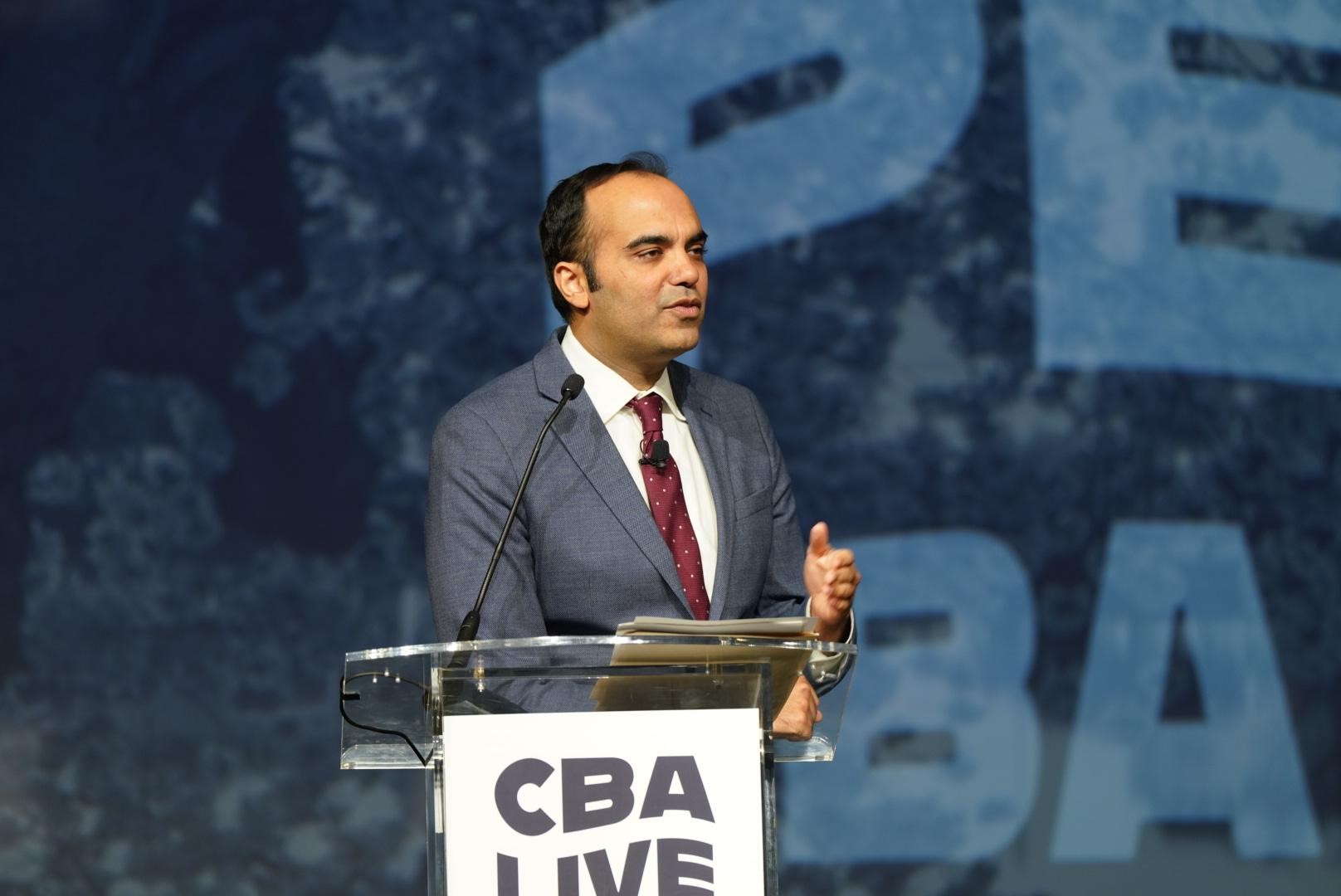CBA on Section 1071: What You Need To Know

On Thursday, March 31, Consumer Financial Protection Bureau (CFPB) released a final rule to expand data collection requirements for financial institutions in the small business lending market under Section 1071 of the Dodd-Frank Act. Here’s an overview what you need to know, why it matters, how it will affect small business lending, and more:
Consumer Bankers Association’s David Pommerehn moderates a panel discussion at CBA LIVE 2023 with leading experts on Section 1071: Alan Ellison, Small Business Senior Program Manager at the CFPB; Mark Schultz, Vice President, Compliance & Ethics – Fair & Responsible Banking at Capital One; and Jonice Gray Tucker, Partner, Finance Services – Investigations, Regulation & Litigation at Paul Hastings. Click HERE or the image above to watch the recorded conversation.
How It Started
As part of the 2010 Dodd-Frank Act, Congress established Section 1071 to mandate certain reporting requirements for small business lenders, requiring nearly every financial institution to compile, maintain, and report information concerning credit applications made by woman-owned and minority-owned small businesses, with the goal of expanding access to credit in underserved communities. After more than a decade since Congress enacted Section 1071, the Bureau executed its authority to define the scope and requirements of the eventual regulation by issuing a proposed rule in September 2021, receiving feedback in 2022, and issuing a final rule last week.
Why It Matters
The complexities of collecting and reporting credit application data on woman-, minority-owned, and LGBTQI+ small businesses under Section 1071 cannot be overstated due to the nature of small business lending and the ways these applications are processed.
- Some have compared this data collection to the Home Mortgage Disclosure Act (HMDA) data collection in mortgage origination. However, unlike HMDA, which has been implemented for more than 30 years, this is a brand-new data collection for small business lending and thus presents herculean challenges.
- Any time there is a new data collection, there will be growing pains and inaccuracies in the data collected. Thus, CBA urges policymakers to take a measured approach to using this data to inform future policies affecting small business.
What We’re Saying
In response to release of the final rule on March 30, 2023, Consumer Bankers Association (CBA) President and CEO Lindsey Johnson said, “Banks fully support the mission of Section 1071 and have taken significant steps to expand access to credit for minority- and woman-owned businesses. Helping ensure Main Street job creators have the tools necessary to thrive amidst ongoing economic uncertainty is at the core to our industry’s mission.”
- “CBA long has urged policymakers to recognize the significant time and resources necessary for banks to meet new regulatory expectations and deliver on the intent of Section 1071 in the market, and we’re concerned the final implementation timeline is insufficient for such a massive undertaking. As such, CBA will continue urging the Bureau to extend the timeline.”
- “Additionally, while we are encouraged the Bureau applied new data collection requirements equally across the financial services ecosystem – including to fintechs and other non-banks that lend to small businesses without federal oversight – the $5 million threshold will complicate the collection process by capturing data from businesses that are not traditionally considered to be small and will not reflect the intended purpose of 1071.”
CBA has been working on Section 1071 for over a decade and successfully advocated the CFPB to consider several recommendations relating to any final rule, including:
- Narrowing the scope of data collection to women-owned or minority-owned “Small Business” entities.
- Clarifying the definition of “Small Business” to prevent inconsistencies and confusion.
- Defining several transaction types not within scope, including:
- Inquiries/pre-qualifications
- Reevaluation, extension, and renewal requests, except requests for additional credit amounts
- Lender initiated credit line increases
- Solicitations and firm offers of credit
When it comes to implementing Section 1071, while there are still many challenges ahead for banks many of CBA’s advocacy efforts were reflected in the final rule. Below are five of the most significant changes in the rule and how they compare to what CBA advocated for:
The Policy |
What CBA Advocated For |
Outcome |
What the Rule Says |
|
Covered Loans and Lenders |
CBA has long advocated for the entire small business lending ecosystem – nonbanks and financial institutions of all sizes – to be included in any final rule to ensure the intent of Section 1071 is successfully delivered in the market. |
|
The rule covers closed-end loans, lines of credit, business credit cards, online credit products, and merchant cash advances by banks, credit unions, and non-bank lenders. The rule covers lenders making over 100 (changed from 25 in the NPRM) covered small business loans per year. |
|
Demographic & Financial Data Collection |
CBA believes the ability for lenders to rely on the information provided by borrowers without the need to verify and without the need to make their own determinations (i.e., visual determinations of race and ethnicity) is a positive outcome and something we advocated for to ensure borrowers could self-identify and report their race and ethnicity, rather than allowing assumptions to be made to fulfil a data collection requirement. |
|
Small businesses will be able to self-identify as women-, minority-, or LGBTQI+-owned. Lenders will be able to rely on financial and other information provided by the small business, rather than loan officers being required to make their own determinations of an applicant’s race, ethnicity, or any other demographic information, as was originally proposed by the CFPB. |
|
Duplicative Reporting Requirements |
CBA long advocated for the ability to sync existing reporting systems. Allowing lenders to satisfy new reporting requirements with their own existing reporting systems will help minimize potential disruption to borrowers while ensuring the collection process is more efficient and accurate. |
|
Loans reportable under HMDA will not need to be reported under the small business lending rule. The rule is also designed to work in concert with rules under CRA reporting requirements. |
|
Small Business Lending Implementation Support |
In anticipation of the final Section 1071 Rule, CBA called on the Bureau to provide robust industry implementation support such as written implementation materials like guides, charts, and summaries, and industry outreach and working groups. Because Section 1071 implementation will require the development of entirely new systems, it will be critical for the CFPB to work collaboratively with the industry to ensure the goals of protecting and expanding access to credit for small businesses and underserved communities come to fruition. |
|
With the release of the final rule, the Bureau released several implementation materials including an executive summary, data points chart, key dates timeline, a coverage info sheet, and a “Small Business Lending Help” site. The Bureau also released the Filing Instructions Guideon the same day as the final rule. |
|
Definition of Small Business |
While a standard definition is a win for the industry and something CBA had advocated for many years, CBA advocated for a much lower threshold than the $5M proposed threshold and believes $5M threshold will capture data from businesses that are not traditionally considered to be small and will not reflect the intended purpose of 1071. |
|
The final rule provides a standard definition of a small business as one with gross revenue under $5 million in its last fiscal year. |
|
Phased Implementation |
CBA has long advocated for an extended timeframe, providing lenders adequate lead time to develop data collection platforms and comply with new requirements, which would help ensure data is accurately captured and reported without stifling efforts to expand small business’ access to credit. CBA believes this short implementation period is not sufficient for implementation and will continue to work with the CFPB to extend the timeframe. |
|
The final rule requires larger lenders, those that originate at least 2,500 small business loans a year, to collect data starting October 1, 2024. Other lenders will have later reporting requirements. |
CBA Advocacy
In January 2022, CBA submitted a comprehensive letter in response to the CFPB’s Notice of Proposed Rulemaking (NPRM) for Section 1071 of the Dodd-Frank Act. In April 2022, CBA reaffirmed its commitment to expanding access to credit in underserved communities in a Letter to the Editor in American Banker. CBA has also called on the Bureau to create an industry-wide Section 1071 task force.
What’s Next
While Section 1071 rule is final, CBA will continue to advocate for an extended implementation timeframe to ensure successful implementation. It is not uncommon for the CFPB to change its timeline once a rule has been finalized. For instance, the Bureau previously extended the compliance deadline for the TILA-RESPA Integrated Disclosures (TRID) rule and the effective date for the Prepaid rule, and proposed to extend the deadline for the Debt Collection rule.
To learn more about CBA’s recommendations to strengthen the CFPB’s implementation of Section 1071, click HERE and HERE.
To watch a panel discussion on Section 1071 with leading experts and moderated by CBA’s David Pommerehn, click HERE.



